The Visual Guide to
Ovine Reproduction
- Lambing Facilities
- Normal Lambing
- Early Signs of Labor
- Presentation
- Lambing Injuries
- Cesarean Section
- Fetotomy
- Neonate
Obstetrics: Presentation
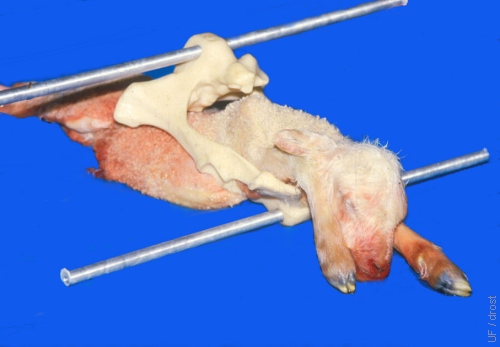
Normal Anterior Presentation.
The lamb is in anterior presentation, in a dorso-sacral position, with normal posture. Most lambs are delivered this way.
Smith MC (2006)
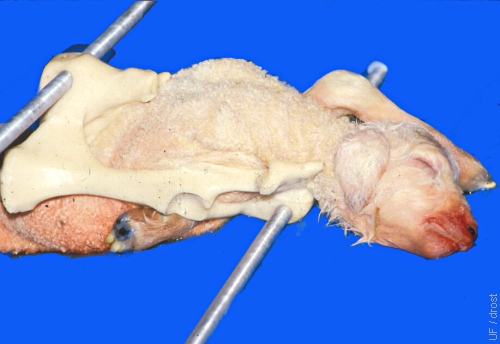
Right Front Leg Retained.
The lamb is in anterior presentation, in a dorso-sacral position, with an abnormal posture. The right front leg is retained at the carpus. Delivery is possible when the retained leg is either retrieved and fully extended, or when the carpus is pushed back into the uterus so the leg is fully retained at the shoulder.
Smith MC (2006)
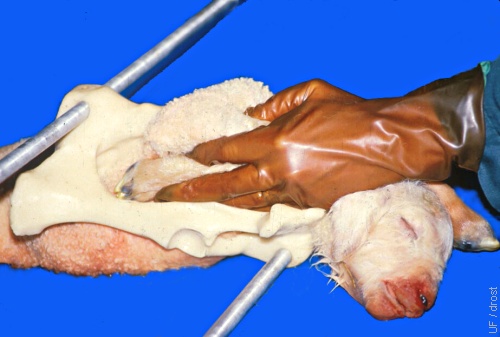
Retrieval of the Forelimb.
The lamb is in anterior presentation, in dorsosacral position, with retention of the right front leg at the carpus. The pastern is grasped between the index finger and the middle finger, to extend the leg.
Smith MC (2006)
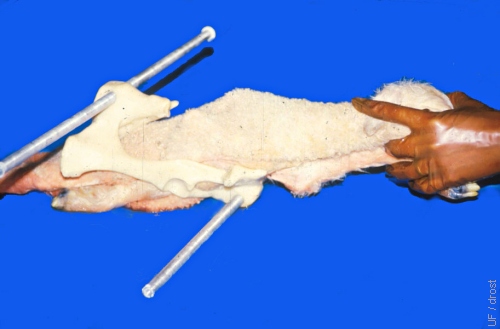
Delivery With One Leg Back.
Delivery of a lamb is possible with one leg fully retained at the shoulder, using ample lubrication.
Smith MC (2006)

Both Front Legs Retained.
The lamb is in anterior presentation, in a dorso-sacral position, with an abnormal posture. Both forelimbs are retained at the shoulder, making the diameter of the pectoral girdle too large to permit delivery. At least one limb has to be retrieved and extended to allow delivery. If the lamb is dead, the head may be removed to create more space to maneuver.
Smith MC (2006)
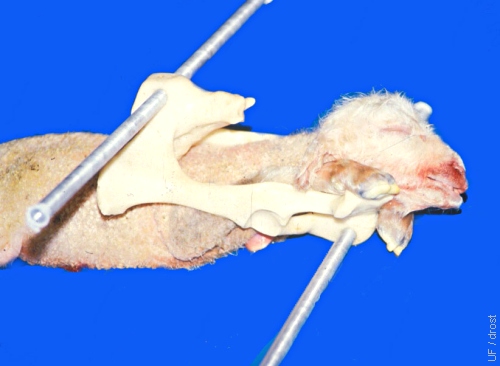
Leg Retained at the Elbow.
The lamb is in anterior presentation, in a dorso-sacral position, with abnormal posture. Both legs are retained at the elbow. The lamb may need to be repelled into the uterus to permit extension of the front legs, but often traction on just one leg at a time will correct the "elbow lock".
Smith MC (2006)
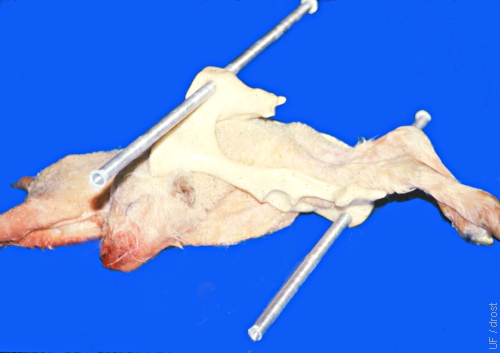
Head Retained.
The lamb is in anterior presentation, in a dorso-sacral position, with abnormal posture. The head is retained to its right. The lamb will need to be repelled into the uterus to retrieve the head and extend it and the neck to permit delivery.
Smith MC (2006)
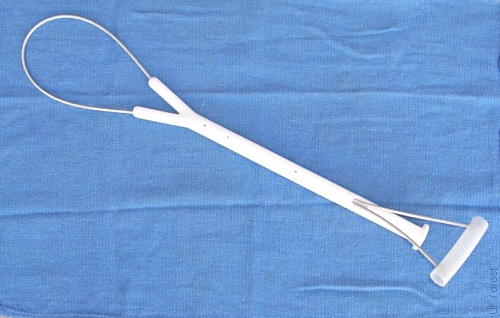
Obstetrical Snare.
Obstetrical snare. Lamb puller. The loop is placed behind the ears and the V of the shaft under the lower jaw to facilitate extension of the head and neck.
Smith MC (2006)
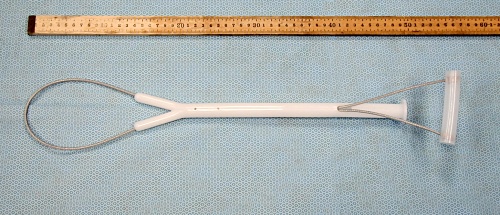
Head Snare.
Obstetrical head snare. The loop is placed behind the ears and the V of the shaft under the lower jaw to facilitate extension of the head and neck.
Drost M (2008)
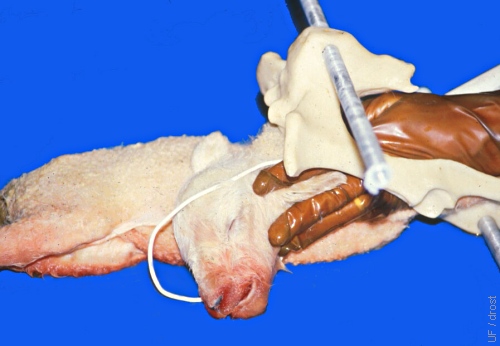
Placement of the Head Snare.
The lamb is in anterior presentation, in a dorso-sacral position, with abnormal posture. The head is retained to the right. The snare is applied to the head in order to extend the neck to permit vaginal delivery. One finger on the nose will help to keep the snared head pointed in the correct direction.
Smith MC (2006)
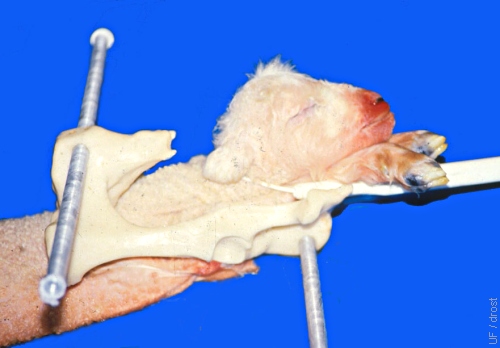
Head Snare in Place.
A snare is placed with the loop behind the poll and the handle below the front legs and the mandible. Alternatively, the V of the lamb puller may be placed under the jaw, while manual traction is applied to the legs.
Smith MC (2006)

One Hindlimb Retained.
The lamb is in posterior presentation, in a dorsosacral position, with the right hind limb retained at the hip. It is possible to deliver the lamb in this configuration if the retained limb is fully extended underneath the body.
Smith MC (2006)
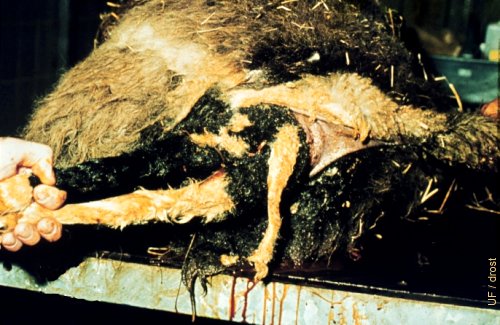
Posterior Presentation.
Posterior presentation, dorsosacral position, and normal posture of a dead fetus. Meconium stained amniotic fluid indicates hypoxia in utero. Extra lubricant is recommended.
Utrecht (1976)
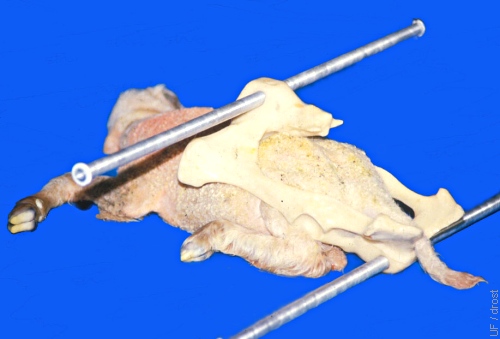
Posterior Presentation.
The lamb is presented in a posterior presentation, dorsosacral position, with both limbs retained, the left one at the hock and the right one at the hip. Correction should consist of fully extending the left limb. This will require repelling the lamb into the uterus to make room to maneuver.
Smith MC (2006)

Transverse Presentation.
This lamb is in a transverse dorsal presentation with a right cephalo-ilial position. The location of the head may be difficult to determine for lack of palpable landmarks. It is also difficult to determine whether the fetus is alive or dead. Try to repel the fetus and use finger tips to walk it into a breech position, as then only one hind limb needs to be extended to permit delivery. If this is not possible, a cesarean section will be required for delivery.
Smith MC (2006)
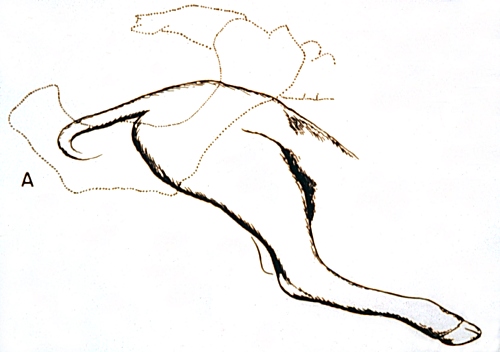
Both Legs Retained at the Hips.
True breech: posterior presentation, dorsosacral position, both limbs retained at the hips.
Roberts SJ (1986)
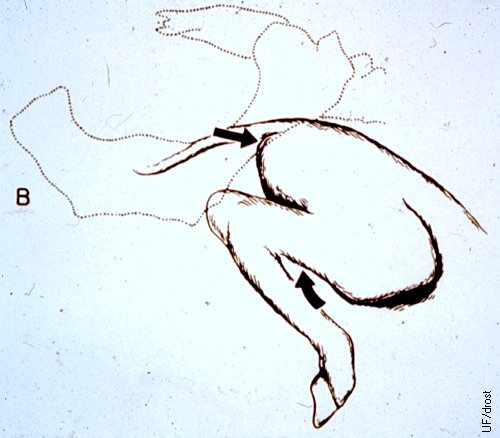
Anterior and Upward Repulsion.
The first steps in the correction of a true breech are to repel the fetus anteriorly and upwards, and to retrieve a hock.
Roberts SJ (1986)
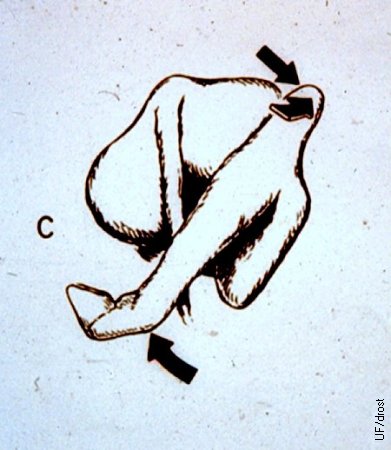
Lateral Rotation of Hock.
The second maneuver is to push the hock laterally and forwards which aids in bringing the fetlock medially.
Roberts SJ (1986)
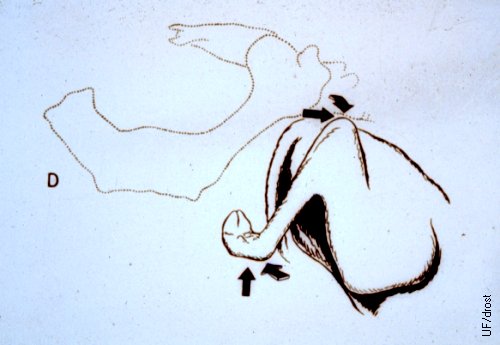
Medial Traction on Fetlock.
A rope can then be placed on the foot to pull it medially while repelling the hock laterally.
Roberts SJ (1986)
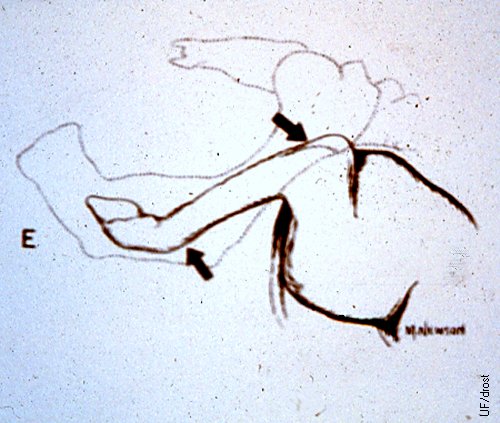
Caudal Traction on Pastern.
Final extension of the first leg. The procedure may be repeated for the second leg which should be relatively easier because there is more room to maneuver. Frequently, the lamb can be extracted with one leg still retained at the hip.
Roberts SJ (1986)
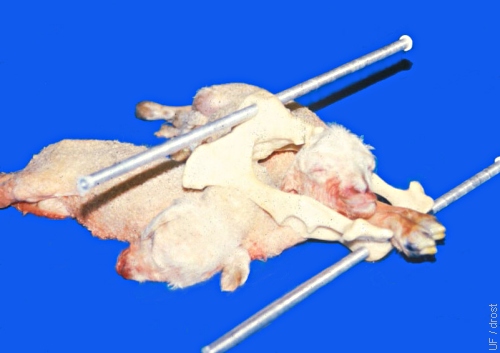
Tangled Twins.
Tangled twins present a puzzle as to which legs belong to which head. The feet that do not belong to the head will need to be repelled to make room for the lamb with head already in the birth canal to be extracted first. A hindleg can be differentiated from a front leg by palpating the presence of one joint, the pastern below the hock, which feels similar to the point of th elbow. In case of a front leg, there are two joints below the point of the elbow, the carpus and the pastern.
Smith MC (2006)
